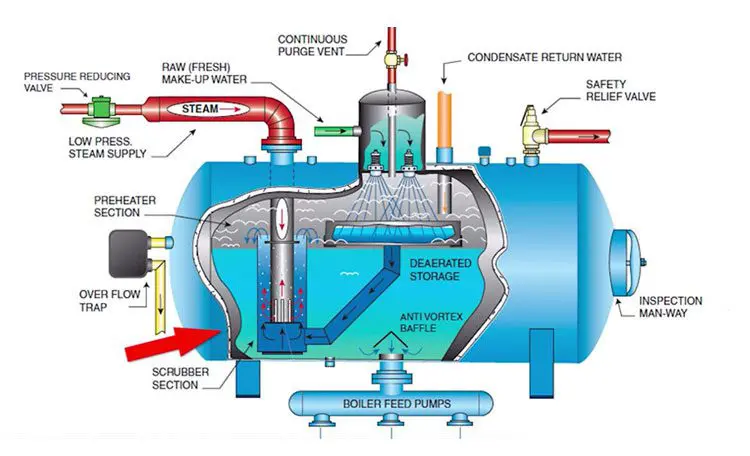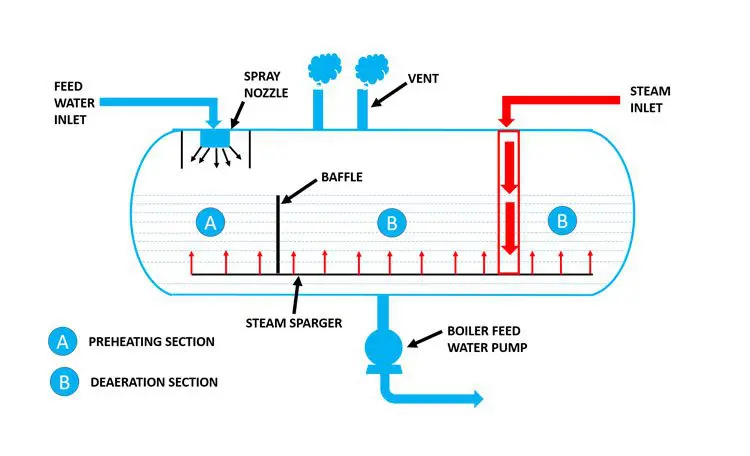What is the use of deaerator?
In fact, the deaerator has two very important uses in the boiler, which are:
· Deaeration of inlet water to the boiler
· Preheat the inlet water to the boiler
Dehydration and the main reason for its use were mentioned at the beginning of the text, but another very important application of the deaerator is its use in the preheating stage of water, which will have a great impact on the efficiency and performance of the boiler. Low temperature water entering the boiler causes heat shock which will cause a lot of damage to the boiler. In addition to reducing the life of the boiler, the steaming capacity of the device is greatly reduced by the entry of low temperature water into it. For this purpose, a deaerator is used to preheat the inlet water to the boiler.
What are the working steps of deaerators?
Regardless of the method of deaeration in the Deaerator, the steps to do this can be described as follows:
· Water enters the deaerator
· Deaeration with steam
· Deaeration with oxygen absorber
In short, the operation of different types of deaeration systems is such that first water enters the device and a large volume of insoluble gases and carbon dioxide are removed and transferred out of the outlet valve. In order to remove the amount of oxygen remaining in the water, oxygen absorbers are used, the most common of which include the following:
· Sodium sulfite (Na2SO3)
· carbohydrazide
· Diethyl hydroxylamine (DEHA)
· Nitrilotriacetic acid (NTA)
· Ethylenediaminetetraacetic acid (EDTA)
· Hydroquinone
· Hydrazine (N2H4)
Types of deaerators
According to the work procedure and method used to separate oxygen and water-insoluble gases, boiler ventilation systems can be divided into two general groups, which are:
· Tray-type deaerator
· spray-type deaerator
Tray-type deaerator
One of the most common types of boiler deaerator systems is tray deaerators. The general structure of this type of deaerator consists of a horizontal boiler with a ridge in the middle, which is located on top of the ridge of a kind of cap in the shape of an arched dome. Water enters from the dome of the device and is placed on trays with multiple pores and is transported down in droplets. As water enters the tray openings, the deaerator steam moves from the bottom to the top with low pressure and passes through the tray openings. In case of water collision with the deaerator steam, due to the increase of water temperature and reaching the saturation temperature, a large part of the gases in it are separated and together with the deaerator steam are transferred out of the device from the drain valve above the dome.
After this stage, water enters the horizontal source and to separate the remaining oxygen, an oxygen absorber such as sodium sulfite is used and finally the remaining oxygen reacts with it and turns into sodium sulfate. Sodium sulfate is not corrosive and will not cause problems for the boiler. Finally, water from the drain valve will be transferred to the power supply located outside the deaerator at low pressure.
A very important point in this type of deaerator is that the gas drain valve at the top of the dome should be open enough that the oxygen in the steam can easily escape from the tank. If this is not taken into account, some of the oxygen separated from the deaeration stage will enter the water.







Leave a Reply